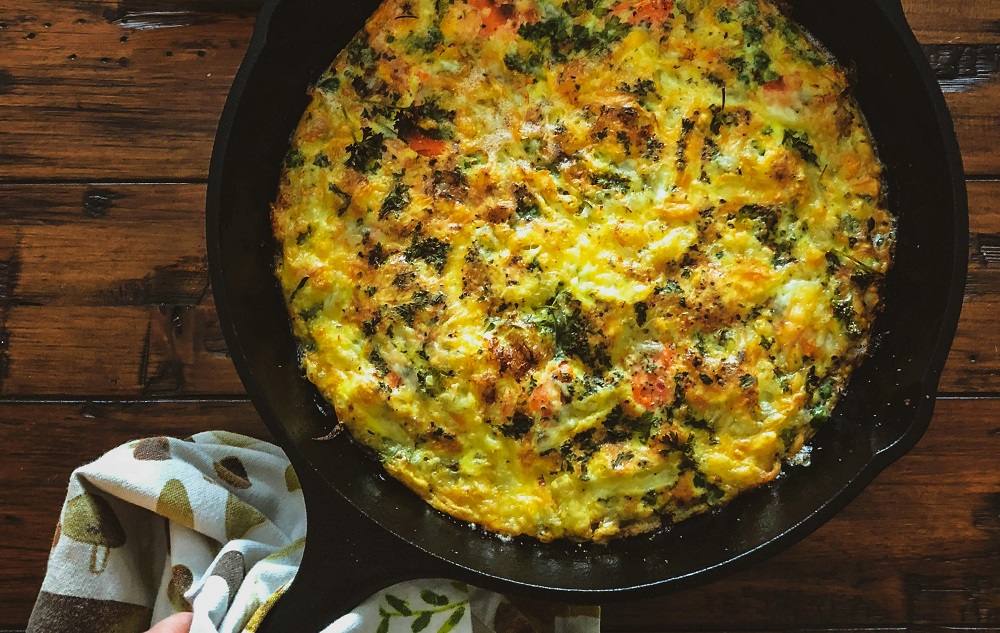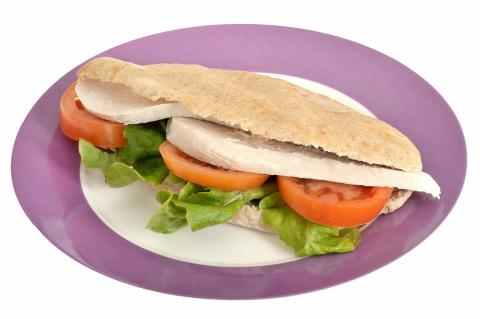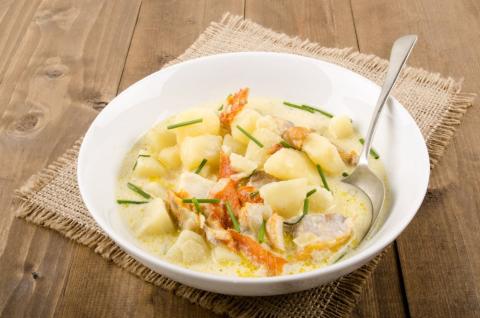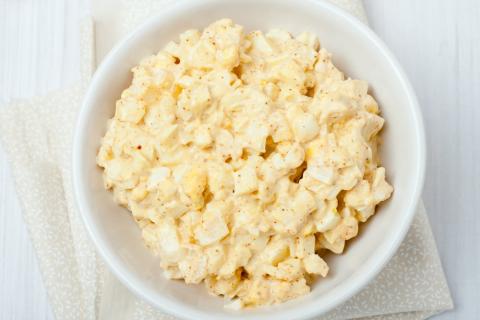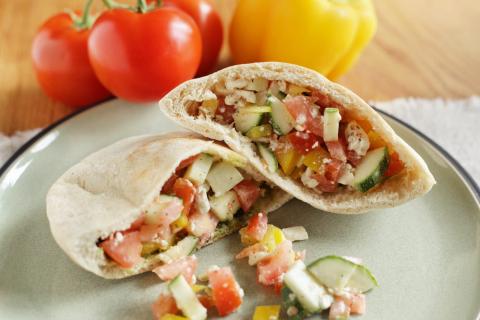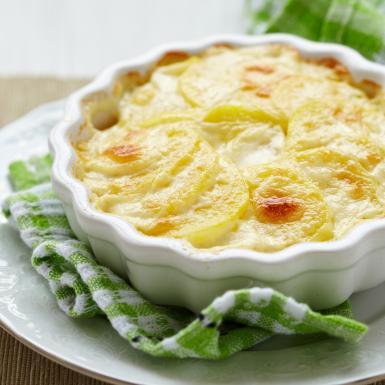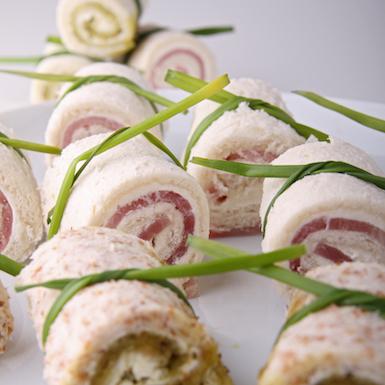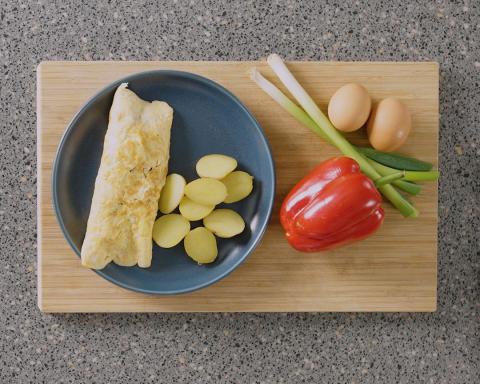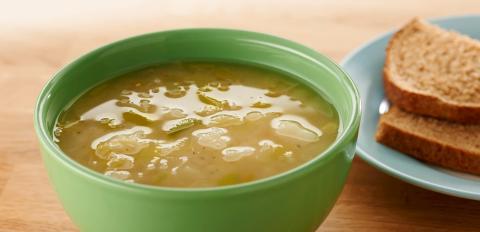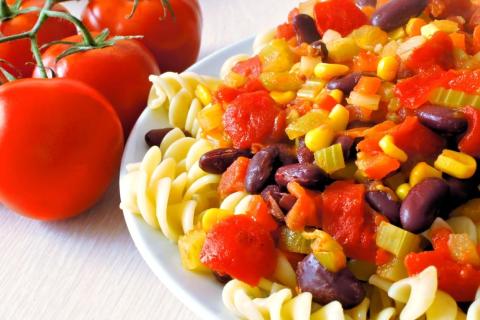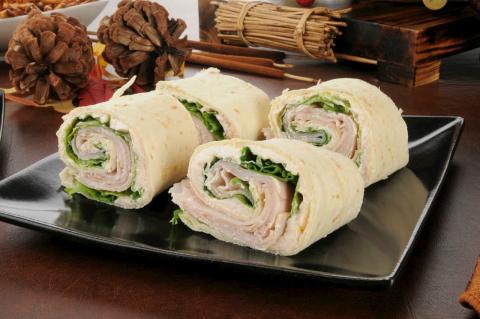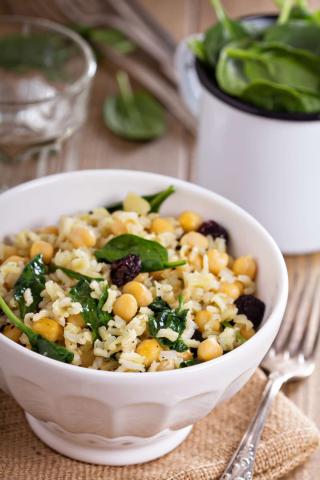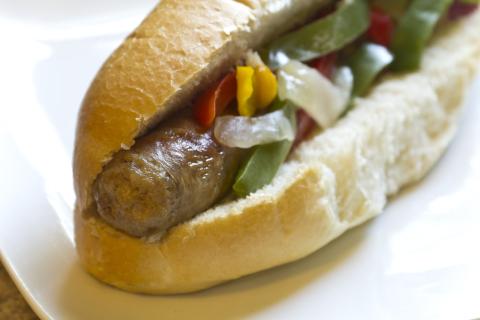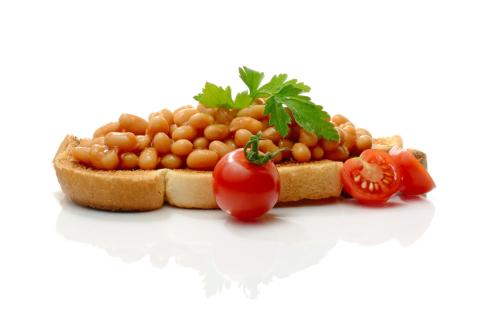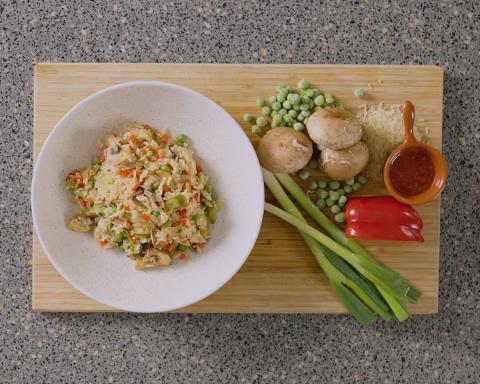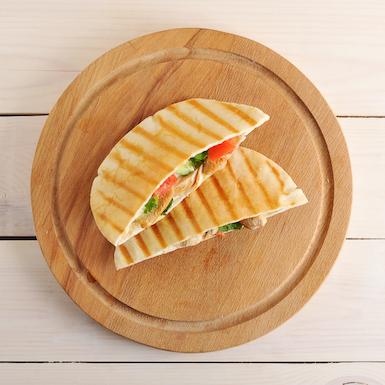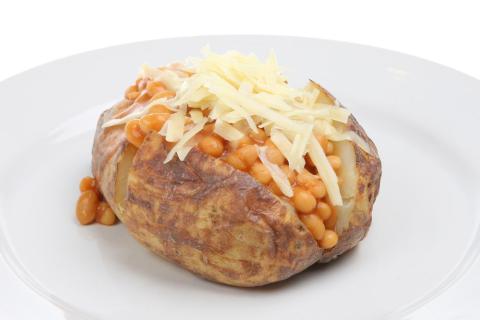- 1 ½ Cups (150g) Dried Pasta
- 1 Tablespoon (10g) Vegetable Oil
- 2 Small Sized (120g) Onions
- 2 Medium Sized (200g) Courgettes
- 2 Medium Sized (160g) Carrots
- 4 (200g) Eggs
- 8 Tablespoons (80g) Reduced Fat Cheddar Cheese
- 2 Teaspoons (2g) Dried Mixed Herbs
- To Taste Ground Black Pepper
Ingredients
Allergy Disclaimer
Always check the label of each ingredient for allergy warnings.
Method
- Cook the pasta shapes as per manufacturers' instructions then drain and rinse with cold water.
- Peel and chop onions, peel and grate courgettes and carrots. Grate the cheese.
- Heat oil in a large frying pan and then cook onions for 3-4 minutes. Remove from the heat and add courgettes, carrots and pasta. Mix well.
- Crack the eggs and beat together in a bowl and then add the cheese. Stir in herbs and add pepper to taste.
- Add eggs to the frying pan with vegetables and pasta then cook on a low heat for 4-5 minutes without stirring to allow base to set. Meanwhile, heat the grill on a medium to high heat.
- Put the frying pan under the grill and cook for 4-5 minutes until set and golden brown.
- Cut into wedges and serve or alternatively allow to cool completely and then wrap wedges in clingfilm and keep in fridge until needed.
Time Saver Tips
Wedges can be made the day before and used in a packed lunch.
Cost Saver Tips
A great way to use any left over pasta.
Tips for Kids
They will enjoy cracking and beating the eggs.
Nutritional Information
Based on a single serving of 4g (% of an adult's reference intake)
Energy
330 kcals ( 17 %)
1,387 kJ ( 17 %)
Fat
4.3 g ( 22 %)
Saturates
35.3 g ( %)
Sugar
5.3 g ( 6 %)
Salt
0.5 g ( 8 %)
Detailed nutritional information
| Per 100g | Per 4g serving | |
|---|---|---|
| Energy Kcals | 130 | 330 |
| Energy Kj | 546 | 1,387 |
| Protein | 7.8 g | 19.8 g |
| Total Fat | g | g |
| Saturated Fat | 1.7 g | 4.3 g |
| Carbohydrates | 13.9 g | 35.3 g |
| Total Sugars | 2.1 g | 5.3 g |
| NSP Fibre | 1.6 g | 4.1 g |
| Sodium | 95 mg | 241 mg |
| Salt | 0.2 g | 0.5 g |
Find out about nutritional labelling
Nutrition labels on the front of packaging
- Most of the big supermarkets and many food manufacturers display nutritional information on the front of pre-packed food.
- Front of pack nutrition labels provide information on the number of grams of fat, saturated fat, sugars and salt and the amount of energy (in kJ and kcal) in a serving or portion of a recipe.
- The labels also include information about reference intakes (expressed as a percentage) which are guidelines about the approximate amount of particular nutrients and energy required for a healthy diet.
- The colour coding tells you at a glance if the food has high (red), medium (amber) or low (green) amounts of fat, saturated fat, sugars and salt.
- The more greens on the label, the healthier the choice
- Amber means neither high nor low, so you can eat foods with all or mostly ambers on the label most of the time.
- Reds on the label means the food is high in that nutrient and these are the foods we should cut down on. Try to eat these foods less often and in small amounts.
Food shopping tips
If you’re trying to decide which product to choose, check to see if there's a nutrition label on the front of the pack. This will help you to quickly assess how your choices stack up. You will often find a mixture of red, amber and green colour coding for the nutrients. So when you're choosing between similar products, try to go for more greens and ambers and fewer reds if you want to make a healthier choice.
 Activities & Play
Activities & Play Behaviour
Behaviour Childcare
Childcare Development & Growing Up
Development & Growing Up Family, Friends & Relationships
Family, Friends & Relationships Feeding Your Baby
Feeding Your Baby Food & Eating
Food & Eating Health & Safety
Health & Safety Mental Health & Wellbeing
Mental Health & Wellbeing Money & Work
Money & Work Online Behaviour & Safety
Online Behaviour & Safety Pregnancy & First Days
Pregnancy & First Days School & Education
School & Education Sleep
Sleep

